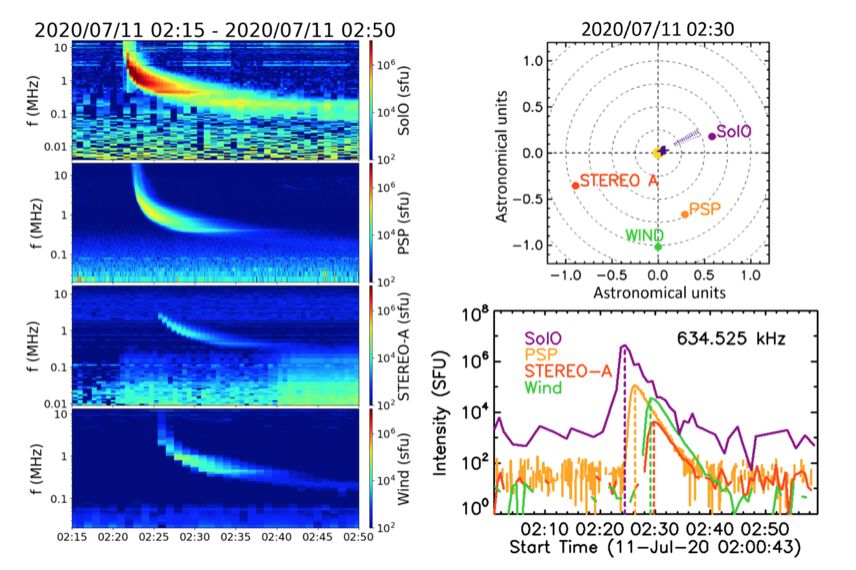For a mission that has just entered its primary science phase, Solar Orbiter has already produced many remarkable results. Released on December 14, 2021, a special issue of Astronomy and Astrophysics brings together a wealth of studies and observations obtained during the mission’s cruise phase. Of the 56 articles published, 25 are based on data from the Radio & Plasma Waves (RPW) instrument (Maksimovic et al., A&A, 2020).
The RPW instrument, which measures electric and magnetic waves in the inner heliosphere, was designed and built by an international consortium led by Milan Maksimovic (LESIA, Paris Observatory). After more than ten years of work, RPW was launched with nine other instruments and telescopes in February 2020 on board the European Solar Orbiter probe towards the Sun.
After a 21-month journey of nearly two billion kilometres, the probe underwent a final gravitational assist from Earth on November 27, before beginning the nominal phase of its mission with a first pass at 0.3 au at the end of March 2022.
The papers produced with the observations obtained during the cruise phase cover a very wide range of scientific objectives. RPW has thus obtained the first observations of solar type III radio emission with four different probes, including Solar Orbiter (Musset et al., A&A, 2021 see Figure 1). These radio emissions are produced by energetic electrons injected in the heliosphere during solar flares.

Figure 1: First observations of a type III solar radio emission with four different radio probes, including Solar Orbiter. The left panel shows the dynamic spectrum of radio fluxes observed by the four probes (from top to bottom: Solar Orbiter, Parker Solar Probe, Stereo-A and WIND) for the July 11, 2020 event at about 2:30 am. The top right panel shows the respective positions of the four probes and the bottom right panel shows the light curves at 634 kHz (Musset et al., A&A 2021)
The instrument also allowed to study the interplanetary dust rate along the orbit of the probe and to show that the studied dust population moves away from the Sun at a speed of about 50 km/s. (Zaslavsky et al., 2021). RPW was also able to measure the waves associated with the tail of the comet ATLAS (Matteini et al., 2021), as well as with the magnetosphere of Venus (Hadid et al., 2021), both encountered during the Solar Orbiter trip around the Sun. The latter could be studied in more detail by combining the RPW data with those of the energetic particle detectors of the EPD instrument (Gómez-Herrero et al., 2021; Kollhoff et al. 2021)
Finally, the cruise phase allowed to refine the calibration of RPW, performed in the SimEnOm vessel at LESIA in 2016. The performances are close to those expected (Maksimovic et al.,2021). Despite several electro-magnetic disturbances that impact the instrument, the data it provides are of sufficient quality to achieve most of the scientific objectives that have been assumed.
We are confident that RPW will fulfil its science objectives and that it will continue to provide excellent data.
Based on a recent paper: Maksimovic et al, First observations and performance of the RPW instrument on board the Solar Orbiter mission, Astronomy & Astrophysics, 656, A41 (2021) DOI: 10.1051/0004-6361/202141271
References:
Gómez-Herrero R. et al., A&A, 656 L3 (2021)
Hadid L. Z. et al., A&A, 656, A18 (2021)
Maksimovic M. et al., A&A, 656, A41 (2021)
Matteini L. et al., A&A, 656 A39 (2021)
Musset S. et al., A&A, 656, A34 (2021)
Kollhoff A.et al., A&A 656 A20 (2021)
Zaslavsky A. et al., A&A, 656, A30 (2021)
